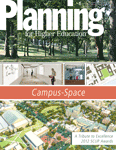- Planning Types
Planning Types
Focus Areas
-
A framework that helps you develop more effective planning processes.
- Challenges
Challenges
Discussions and resources around the unresolved pain points affecting planning in higher education—both emergent and ongoing.
Common Challenges
- Learning Resources
Learning Resources
Featured Formats
Popular Topics
- Conferences & Programs
Conferences & Programs
Upcoming Events
- Community
Community
The SCUP community opens a whole world of integrated planning resources, connections, and expertise.
Get Connected
Give Back
-
Access a world of integrated planning resources, connections, and expertise-become a member!
- Planning Types
Planning Types
Focus Areas
-
A framework that helps you develop more effective planning processes.
- Challenges
Challenges
Discussions and resources around the unresolved pain points affecting planning in higher education—both emergent and ongoing.
Common Challenges
- Learning Resources
Learning Resources
Featured Formats
Popular Topics
- Conferences & Programs
Conferences & Programs
Upcoming Events
- Community
Community
The SCUP community opens a whole world of integrated planning resources, connections, and expertise.
Get Connected
Give Back
-
Access a world of integrated planning resources, connections, and expertise-become a member!
 Planning for Higher Education Journal
Planning for Higher Education JournalNew Metrics for the New Normal
Rethinking Space Utilization Within the University System in Georgia From Volume 41 Number 1 | October–December 2012By Gregory Janks, Alan S. TravisPlanning Types: Campus Planning
From Volume 41 Number 1 | October–December 2012By Gregory Janks, Alan S. TravisPlanning Types: Campus PlanningFor the last 15 years, the University System of Georgia (USG) has implemented its campus master plan template, which includes traditional space planning methodologies, with the assistance of many different consultants. This experience has caused the system to question the value of traditional approaches in guiding capital allocation resource decisions. Many USG institutions function reasonably well with far less space in some categories than traditional guidelines recommend, calling into question the orthodoxy surrounding space “needs.” Different consultants report wildly differing estimates of needs for institutions with similar missions, enrollments, and program mix. Moreover, these needs far exceed available capital. In response, the system has formulated a new methodology for measuring the utilization of space to guide space management and capital allocation decisions for individual institutions and the system as a whole. The goal was to create a process that is understandable, easy to implement, and less prone to distortion that existing methodologies, whose calculations are often complicated and unclear. The new approach includes an overlay taxonomy that groups spaces with similar functions into buckets to minimize the effects of miscategorizations and to provide the atomic units for new utilization metrics, greatly reducing the overall number of required measurements and providing information reflective of modern space usage. The resulting metrics provide new thinking, particularly for classroom and social spaces.
MEMBERS ONLY
Attention Members: Log in to access this item.Not a member? Join now to access this article and all journal articles for free.



